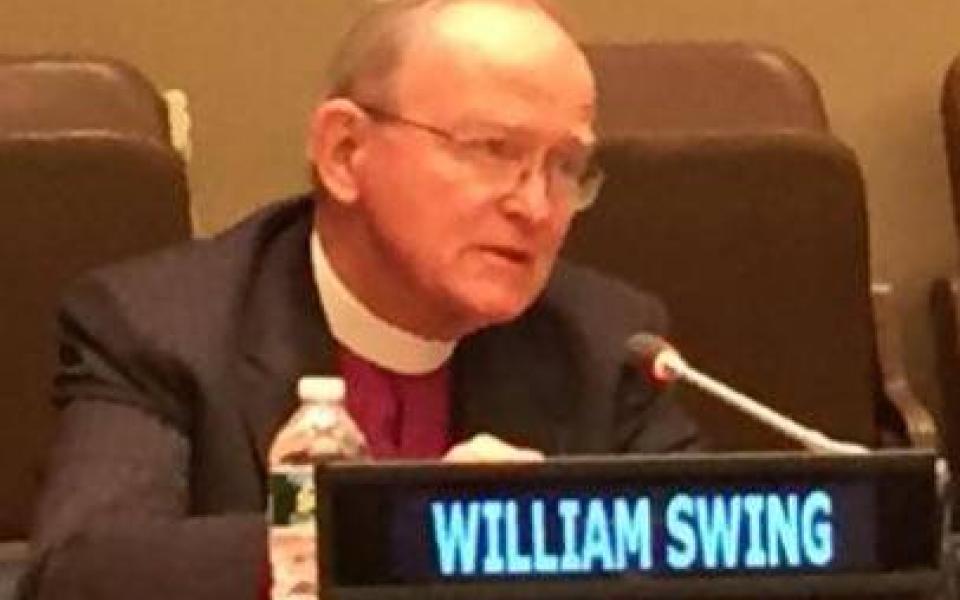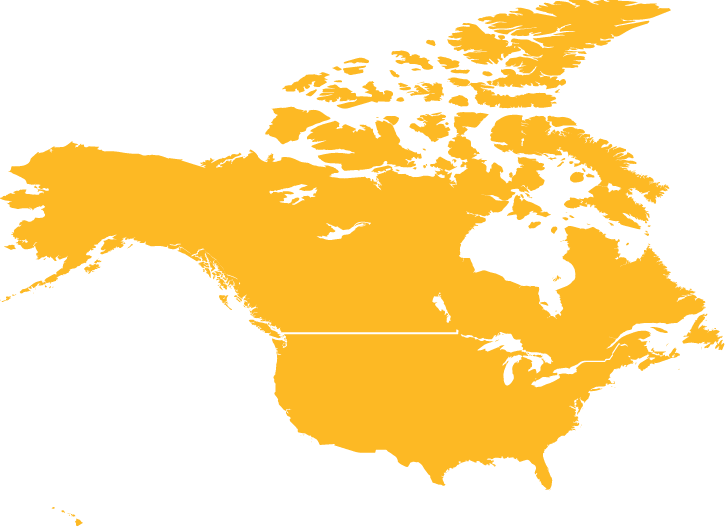
(At the end of April, 2015, and carrying over into the first two weeks of May, 2015, the nations of the world will gather at the United Nations in New York to Review the Non Proliferation Treaty (NPT) which originated in 1970. The NPT calls for nations, not possessing nuclear weapons, to refrain from developing them. And it calls for nations with nuclear weapons to reduce the number of weapons. In anticipation of the NPT Review, religions and interfaith leaders wanted to make sure that their voices would be heard at the UN on this topic. So The Permanent Observer Mission of the Holy See and several other agencies, including the United Religions Initiative, created a panel to focus on spiritual and humanitarian matters which the nations might well not address. Muslim, Jews, Christians and others spoke from their religion’s perspective. The following are my brief remarks on this occasion.)
See the full video above. Bishop Swing's portion begins at 40:15.
Good afternoon! I come to you today bearing two messages.
The first message is from the former Secretary of State, George Shultz. In the past he has hosted Roman Catholic bishops and Evangelical leaders, separately, at the Hoover Institution of Stanford University. The theme on both occasions was nuclear abolition. When he heard that both Roman Catholics and Evangelicals and many more are gathering here today, he wanted everyone to know of his whole hearted support and how thrilled he is.
The second message is from a Japanese lady from Hiroshima, Tomoko Watanbe, whom I met in San Francisco last month when she brought seedlings of three trees that had survived the Hiroshima atomic blast of August 6, 1945. In a few months from now, when these trees are strong enough, they will be planted in the Japanese Tea Garden of San Francisco. They will grow as symbols of the nuclear peace that exists between the United States and Japan.
After giving me the tiny seedlings, Tomoko told me the story of her dear friend, Kiyoko Imori. When the atomic bomb hit Hiroshima in 1945, Kiyoko was an eleven year old girl in the sixth grade at Honnkawa Elementary School. About 400 yards from the epicenter of the destruction! Every child, teacher and staff member in the Honnkawa Elementary School died instantly, everyone except Kiyoko Imori. In addition,her entire family was gone, vaporized or pulverized beyond recognition.
In her teen years and as a young lady, what followed for her was a tumor in her pancreas, then thyroid cancer, then colon cancer, then meningioma and unremitting pain. Despite the unfolding of diseases, she married and was pregnant. Imagine! The possibility of Kiyoko giving birth and starting a family! But that was not to be. Miscarriage followed miscarriage.
Today, seventy years after the bomb, Kiyoko lies in a hospital bed in Japan needing a dose of morphine every four hours….around the clock, every day….. to endure the pain inflicted on her in the Honnkawa Elementary School, on June 6, 1945. In the hallways of her hospital today, her voice can be heard crying out, “Please kill me.”
Who, today, makes the decisions about building more and more sophisticated nuclear weapons to target tomorrow’s children? Of course, the experts do. The expert politicians and military strategists of the nuclear nations! But what do they know about nuclear degraded life? What experience have they had in witnessing the effects of the weapons that they upgrade and modernize? Do they decide the way forward from an antiseptic, safe distance, far away from the reality of nuclear pain or do they listen to the nuclear lament….such as the lament of Kiyoko as she mourns her unborn, and her vaporized classmates, and her annihilated family while she endures a lifetime of excruciating agony. I would wager that she learned more about nuclear weapons in the 6th grade of Honnkawa Elementary School, than what has been learned by all of today’s experts of all of the nuclear nations. She knows the most important thing to know about nuclear weapons. She carries the knowledge in her tiny body.
What is the NPT (Non-Proliferation Treaty)? That is the question! Is the NPT about what we aspire to, once we have run out of enemies? Or is about where we stand once we have weighed the human consequences of our diabolic nuclear creation? Perhaps it all comes down to an ability to hear. Can we hear a voice in the corridors of a Japanese hospital pleading, “Please kill me.” For God’s sake….for God’s sake, what are we going to do about that?
The Rt. Rev. William E. Swing
Founder and President of the United Religions Initiative
Read Bishop Swing's "Prayer for Those Whose Hearts Carry the Weight of Nuclear Weapons."
